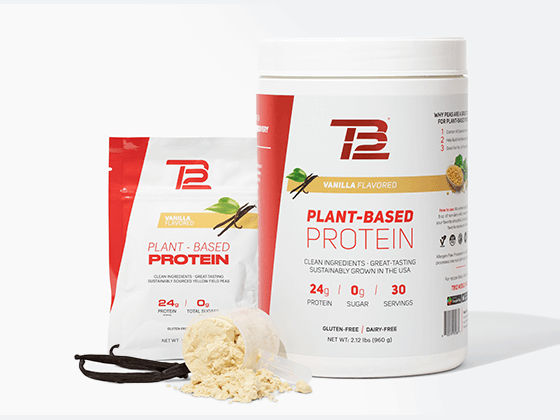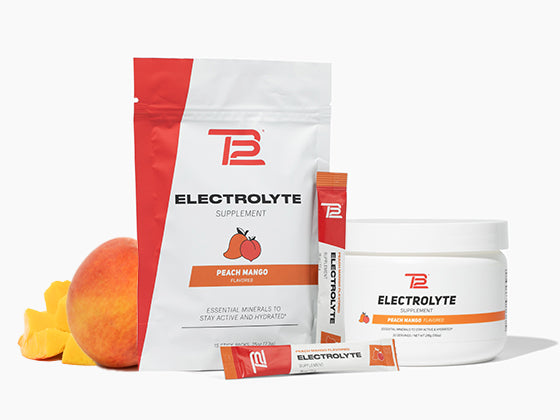AS A LIFELONG athlete, you spend a lot of your time looking for answers. That means sifting through a lot of information, a lot of science, and a lot of opinions that don’t always match up with one another.
We know that one thing that doesn’t help your search for answers is when sources throw around technical terms without explaining them — so we’re going to take a minute to clear some things up.
In this blog, we’re going to explain the difference between three words that might sound vaguely similar: flexibility, mobility, and pliability. It might surprise you that all three of these terms refer to something unique — read on to learn the difference.
Flexibility: How Far Can You Bend?
Think of a rubber band. You’re holding with both hands, two fingers gripping each side. You move your hands further apart, and the rubber band stretches. Pull farther, and it stretches more. But finally, you get to a point where the rubber band doesn’t want to stretch anymore — and if you do stretch it, it snaps. This illustrates the definition of flexibility.
In the context of muscles, flexibility is the ability of a muscle to lengthen passively through a range of motion. Here, the word “passively” means that there’s an external force causing the muscle to stretch, like the force of gravity pulling on your upper body as you bend to touch your toes. In other words, it’s how far a part of your body can stretch when it is pushed or pulled by something else.
If that still doesn’t make sense, take a look at your hands. Hold out your index finger on your dominant hand like you’re pointing at something. Try to raise your index finger as high as you can without pulling it. That’s your index finger’s active range of motion. Now take your other hand, grip the index finger on your dominant hand, and pull it straight back as far as it can go without pain. That’s your finger’s passive range of motion— and the more flexible that joint is, the farther back your finger can go.
Mobility: How well can you move?
This takes us straight to the next term, mobility.
Mobility is different from flexibility in one simple and important way: flexibility is how far a part of your body can move with assistance from an external force, and mobility is how it can move on its own.
Let’s illustrate hip mobility as an example. Stand up for a minute and lift up one knee as high as it can go — but don’t pull it up with your hands. Now move your knee in a big circle, clockwise and then counter-clockwise — as big as you can make it without feeling pain or injuring yourself. This knee circle gives you a picture of your hip mobility; it shows you how far your hip muscles can move your knee on their own.
You can test the mobility of any joint by seeing how far you can reach. Try your wrist if you want to start small, or go big and test out your shoulder. In each self-test, you’re looking to make a big circle with the joint to see how far you can actively move the joint.
Mobility builds on flexibility because it requires an unrestricted range of motion. A joint’s active range of motion is never going to be greater than its passive range of motion. In fact, it’s always the other way around — a joint can only move actively inside the range of motion in which it can move passively. In this way, limited flexibility means limited mobility, and increasing flexibility is a prerequisite for increasing mobility. How Lifestyle Factors Enhance
Pliability
In addition to direct tissue manipulation via a roller, you can enhance your pliability through your lifestyle.
Here are some practical lifestyle tips that will enhance your pliability:
- Stay hydrated by drinking half your body weight in ounces of water every day
- Facilitate recovery by keeping your inflammation low with a diet rich in fruits, vegetables, and whole grains
- Avoid foods that contain pro-inflammatory ingredients like refined carbohydrates and trans fats
- Lower your inflammation by getting a good night’s sleep every night
At TB12, we see the body as one integrated whole and take a holistic and balanced approach to your training. To enable your body to perform for the long term, it’s essential to compliment deliberate pliability training with a healthy lifestyle.
The End Goal: Better Muscle Function for Life
Both flexibility and mobility are important, but pliability is what enables you to perform a movement repeatedly over the long term without putting yourself at risk of injury.
By keeping your muscles long and soft with proper hydration, nutrition, rest, recovery, and deliberate pliability muscle work, you protect yourself from muscular imbalance and overload, optimize your performance, and enable yourself to do what you love for the rest of your life.
Get Pliable Pliability: How Long Before You Break?
At first glance, pliability looks like it would be closely related to flexibility, especially when the word “pliable” comes from the French plier, which literally means “to bend.”
It actually has less to do with literal bending and everything to do with your muscle tissue’s ability to adapt to the demands of your sport. Technically speaking, “pliable” is a term we use to describe a certain kind of muscle tissue that can fully contract to 100-percent and relax back down to zero when not in use. We describe this tissue as “long and soft” because there’s no unnecessary tension in it that could prevent it from doing its job. This kind of muscle is important for you to have because it’s prepared to absorb and disperse the forces encountered during competition.
Pliability is the “missing link” in training
You may have heard us say that pliability is the “missing link” in modern sports training. What we mean by this is that it balances out an unbalanced system.
The traditional model of training says, in a nutshell, that we should always be lifting heavier, running farther, and training for longer periods of time. However, this longer/harder model tends to lead to injury if there isn’t something else to balance it out.
Put simply, working out as often as possible, for as long as possible, and with the most possible resistance (weight) makes muscle tissues tight, dense, and stiff. Instead of being able to contract to 100-percent and then relax back to zero, they’re stuck between, say, 25 and 75 — never fully relaxed and never fully contracted. This makes them unprepared to absorb and disperse the unpredictable forces of competitive sports — which means you’re more likely to get a muscular imbalance and an injury as a result.
How does pliability work?
Pliability can be enhanced in many ways. One of these ways is through bodywork and foam rolling, and another is through your lifestyle: a combination of hydration, nutrition, and proper rest and recovery. We’re going to talk briefly about all of these.
How Tissue Work Enhances Pliability
Soft-tissue mobilization is when a force is applied (i.e. using a TB12 Vibrating Foam Roller or Sphere) to your muscle tissue to increase blood circulation, blood oxygenation, cell permeability, and neuromuscular efficiency.
Let’s break down all these terms.
Blood circulation is the rate of blood flow through the muscle tissue, which has been shown to increase significantly after tissue work. Blood oxygenation is the amount of oxygen in the blood that is pumping through your muscles. Cell permeability refers to how easily nutrients and other important molecules can pass in and out of your cells. Researchers suggest that one of the reasons why tissue mobilization works is because it makes the tiny blood vessels in your muscles more permeable. Neuromuscular efficiency refers to how “strong” of a signal your muscles need in order to contract completely. Tissue work (especially rolling) has been shown to make our muscles better listeners, as it were, so they fire completely with less prompting from the brain.





